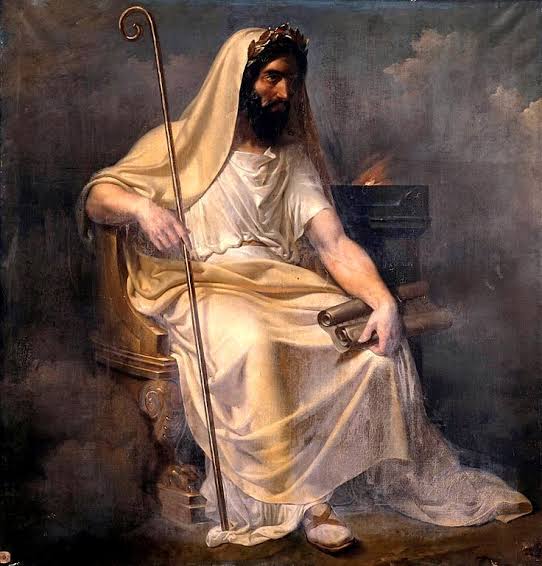This book is a very fine study of the method of sending messages, whether confidential or encrypted, from the very earliest times. Author MartineDiepenbroek (biography below) writes that the “extant evidence for the ancient application of cryptography first appears in the second millennium BCE in Egypt and Mesopotamia,” but it was the Greek and Romans “who first started to use encrypted information for strategic purposes.”
I found most interesting the fact that “there is only one reference to writing in Homer’s entire work. That was likely in the 8th century BCE; moving up to Herodotus in the fifth century BCE, we find 11 instances of writing, which is still a very small number. It is only in the 4th century BCE that literacy became more widespread.
The particular point she makes is that even in the work of Herodotus, we find evidence of Spartan ingenuity in discovering a secret message. The long-held belief (promoted by opponents of Sparta) is that the Spartans were illiterate, secretive and very close to a savage state. Clearly, that is a canard.
The main focus of this book is on something called a scytale, which was linked to Sparta by Plutarch who lived 700 years after Herodotus. Thus, Diepenbroek faces something of a dilemma. Even though there are no reports of the use of the scytale in the period of early or Classical Greece (the word itself first appears in the 7th century BCE), she has written this book on the Spartan use of it.
So just what was it, and how was it used? The answer is far from straightforward. “The broad semantic range and ambiguity of the term scytale as it appears in ancient contexts makes it difficult to determine whether the writer is referring to a simple staff or baton, a walking stick, a dispatch stick, a cryptographic device, or a phallus.”
It seems highly likely that it was to transmit messages from one person to another (especially military commanders) in such a way that if it were intercepted, no one could read the message without a lot of patience and skill. “A good modern parallel might be the paper shredder,” she writes. Instead of trying to piece together shredded strips, the scytale device “offers the opportunity for that reconstruction to be managed much more quickly and easily.”
While some modern scholars have studied the scytale, Diepenbroek has found their Achilles’ heel. “None of these scholars see the scytale as the earliest theoretical transposition cypher in history, nor do they acknowledge the impact the system that Plutarch tells us about has had on later transposition ciphers.”
The question also arises as to why the scytale was not mentioned in a 4th century BCE book on the military by Tacitus. Our author cleverly develops six reasons for the omission, including the fact his book is about short-distance siege warfare, which does not require secret communication. She devotes a chapter to the Roman view of the scytale, a word that first appears in the works of Cicero. The Roman poet Ovid makes mention of secret ways lovers could communicate, and of course Julius Caesar used a cypher for military communication, one that had a “quasi-Spartan character to it.”
In the final chapter, the author covers the development of the transposition cypher system from the Middle Ages to our own time.
In her account of Medieval times, the author begins with Leon Alberti in 1466, who introduced a polyalphabetic cipher in his work A Composition of Ciphers. I was surprised she did not go earlier, by mentioning a cryptologist who was employed by Pope Clement VII: a collection of ciphers devised by Gabriele Lavinde around 1379 still resides in the Vatican Library. The Papacy seems to have been in great need of ciphers: a codex used from 1440 to 1469 contains 70 different ciphers! None of this is mentioned by Diepenbroek, but the links she makes between Thomas Jefferson’s cipher machine of 1795, and another machine “based on the scytale that appeared in the American Civil War” are quite intriguing.
The Notes are very extensive, covering pages 151-182; followed by a Bibliography and Index from 183-243. I found 3 typos: “of even” should read “or even” on page 32; certainly should be certainty on page 58; “has about had” should read “about has had” on page 78
A novel and insightful look at the methods of early communication, this book highlights yet another significant aspect of life in ancient Greece that we know all too little about.
Author biography:
Martine Diepenbroek is a Dutch Classicist and Ancient Historian who finished her PhD on the topic of Ancient Cryptography at the University of Bristol, UK, in 2021. As a Postdoctoral Research Fellow at the University of Johannesburg, South Africa, she is currently working on a number of publications based on her doctoral research.
Image: Plutarch holding a scroll. Does it contain a secret communication?
The Spartan Scytale and Developments in Ancient and Modern Cryptography is by Bloomsbury. It lists for $103.50
